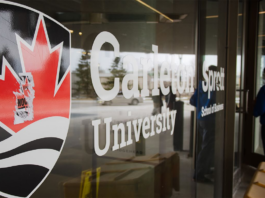Ever wondered what the labels on products mean, and how authentic it is? What exactly does it mean when your coffee is labeled “fair-trade,” or “organic,” and how are those labeling programs regulated?
Graeme Auld, an associate professor at Carleton and a visiting professor at Yale University, recently published a book titled Constructing Private Governance: The Rise and Evolution of Forest, Coffee, and Fisheries Certification.
The Charlatan’s Emily Haws got in touch with Auld to ask him a few questions about his research.
The Charlatan (TC): What does the book centre on?
Graeme Auld (GA): It focuses on one form of private governance: social and environmental certification programs. They represent formalized governance arrangements for developing and promoting standards to give buyers information about products made through environmentally and/or socially responsible economic activities. They are voluntary to the extent that producers, traders, manufacturers, and retailers may choose whether or not to participate. They are “private” because governments are not directly involved in setting standards or require compliance.
TC: Why is certification important?
GA: Certification has gained considerable traction across sectors; in coffee, for instance, recent estimates indicate that 40 per cent of global production has been certified by some program. Given this, and for other reasons, some view certification as a potentially important instrument that can help address global problems from poverty to environmental degradation.
TC: How do you think your book relates to students and their lives?
GA: One can’t consume products in today’s world without being exposed to products that are labeled with some claim about their quality or environmental or social responsibility. I hope the book would offer students an accessible introduction to the history of certification so such that, when confronted by market decisions, they will be more aware of what backs some claims and not others.
TC: What do you think is most surprising about what your book found?
GA: The surprising thing is the role market demand plays. Before my book, most analyzes had not been attentive to the fact market demand may have different effects on different programs, depending on their institutional design and their stage of development. What I document across the sectors and programs helps to illuminate a more nuanced understanding of how market demand affects the development and proliferation of certification.
TC: How did you get interested in this topic?
GA: In the late 1990s, I was seeing the development of forest certification in British Columbia.
Ben Cashore, Deanna Newsom and I began an initial research project focused on certification in the forest sector, where two kinds of programs had emerged.
The first—the Forest Stewardship Council—was backed by a coalition of NGOs and some companies nearer to the consumer end of global supply chains. The second—what became the Program for the Endorsement of Forest Certification or PEFC—had roots in initiatives launched by forest companies and forestland owners as competitors to the FSC—competitors that were, by and large, more business friendly.
We sought to understand why companies in some countries decided to support the Forest Stewardship Council even though they had a more business-friendly program as an alternative.
After deeply investigating the forestry case, I got very interested in differences across sectors.
Certification was spreading. The fishery sector was adopting a similar approach, as were many products in the agriculture, apparel, and service sectors.
But the patterns looked different. No other sector appeared to be developing the two-program competition we’d observed in the forestry case. This intrigued me. And it served as the third of three questions that I tackle in the book.
This interview has been edited and condensed.
Related Articles:




